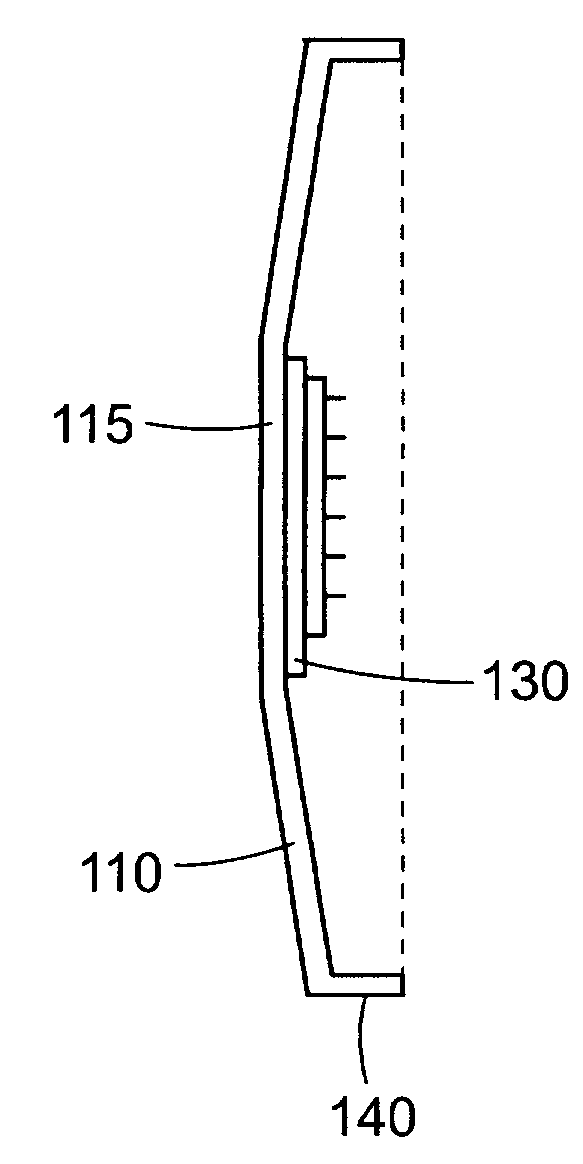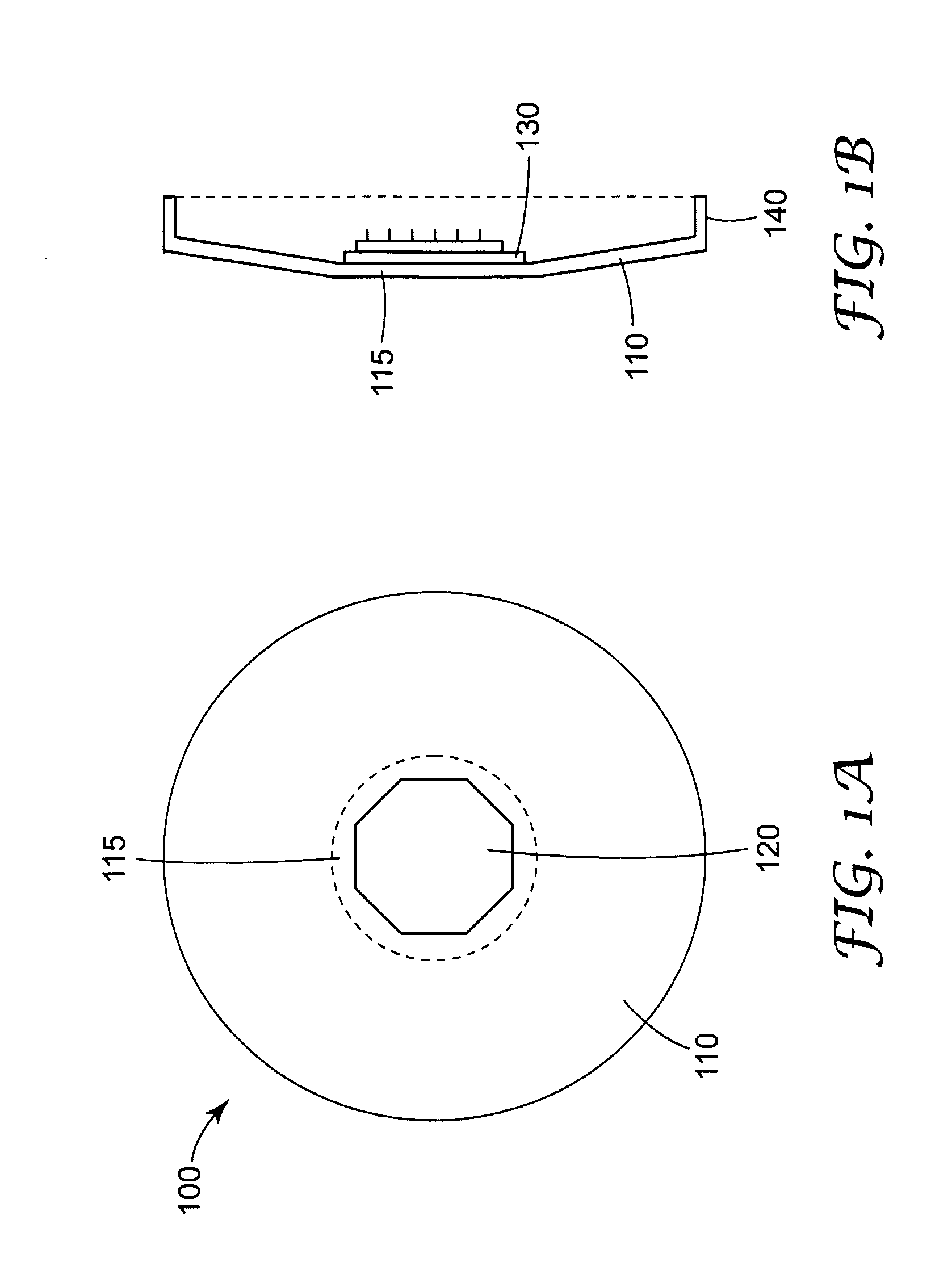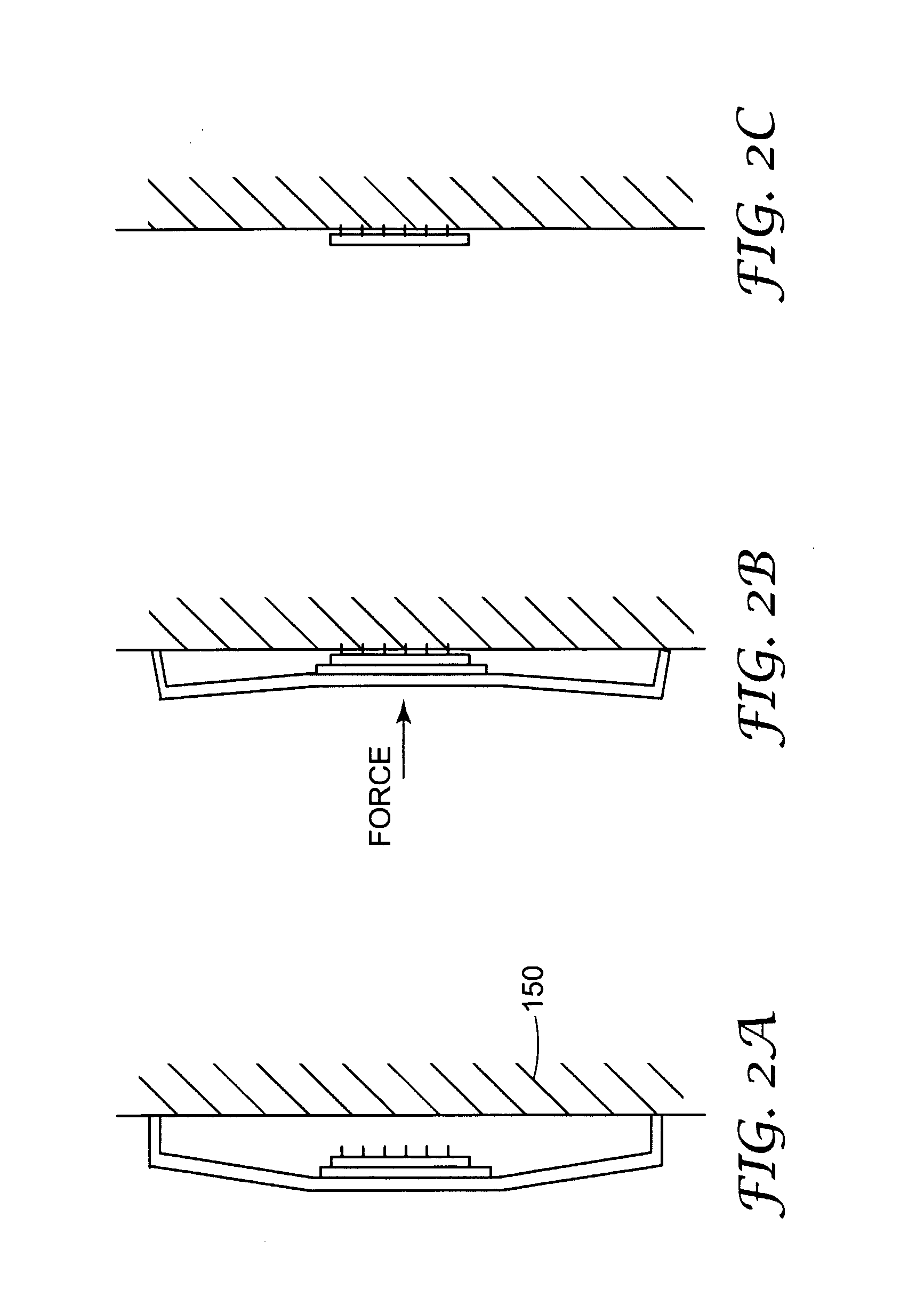Low-Profile Microneedle Array Applicator
a microneedle array and applicator technology, applied in the field of low-profile microneedle array applicators, can solve the problems of limited number of molecules with demonstrated, and achieve the effects of low cost, simple use, and convenient handling
- Summary
- Abstract
- Description
- Claims
- Application Information
AI Technical Summary
Benefits of technology
Problems solved by technology
Method used
Image
Examples
example 1
[0054]A device as generally shown in FIGS. 9A, B was tested to determine the velocity and displacement with which a microneedle device may be applied. The diameter of the flexible sheet member was approximately 4.5 cm. The diameter of the raised central area was approximately 1.8 cm. The spacer comprised 16 individual fins that were approximately 0.5 cm in height and 0.75 cm in width. The gap between each adjacent fin was approximately 1 mm. A small piece of a matte-finish reflective tape was applied to the underside of the raised central area for purposes of conducting the velocity / displacement measurement, however in practice a microneedle device would be attached to the underside of the raised central area. The flexible sheet member and spacer comprised steel with a thickness of approximately 0.3 mm. The device was placed against a fixture attached to a laser measuring device (Laser Vibrometer Controller model no. OFV-3001 and Laser Fiber Interferometer model no. OFV-502, Polytec...
example 2
[0055]The device of example 1 was tested according to the general mode of operation shown in FIGS. 7 and 8. That is, the raised central area was initially depressed and a small piece of a matte-finish reflective tape was applied to the side of the raised central area opposed to the spacer. The device was placed against a fixture attached to a laser measuring device (Laser Vibrometer Controller model no. OFV-3001 and Laser Fiber Interferometer model no. OFV-502, Polytec Inc., Tustin, Calif.) and aligned such that the laser could reflect off of the matte-finish reflective tape. The spacer was manually pushed in a direction parallel to the plane of the flexible sheet member (as shown in FIG. 8A) and the resulting velocity as a function of displacement of the raised central area is shown in FIG. 11. Total displacement was approximately 1.44 mm and the maximum velocity recorded was 7.06 m / s.
PUM
 Login to View More
Login to View More Abstract
Description
Claims
Application Information
 Login to View More
Login to View More - R&D
- Intellectual Property
- Life Sciences
- Materials
- Tech Scout
- Unparalleled Data Quality
- Higher Quality Content
- 60% Fewer Hallucinations
Browse by: Latest US Patents, China's latest patents, Technical Efficacy Thesaurus, Application Domain, Technology Topic, Popular Technical Reports.
© 2025 PatSnap. All rights reserved.Legal|Privacy policy|Modern Slavery Act Transparency Statement|Sitemap|About US| Contact US: help@patsnap.com



